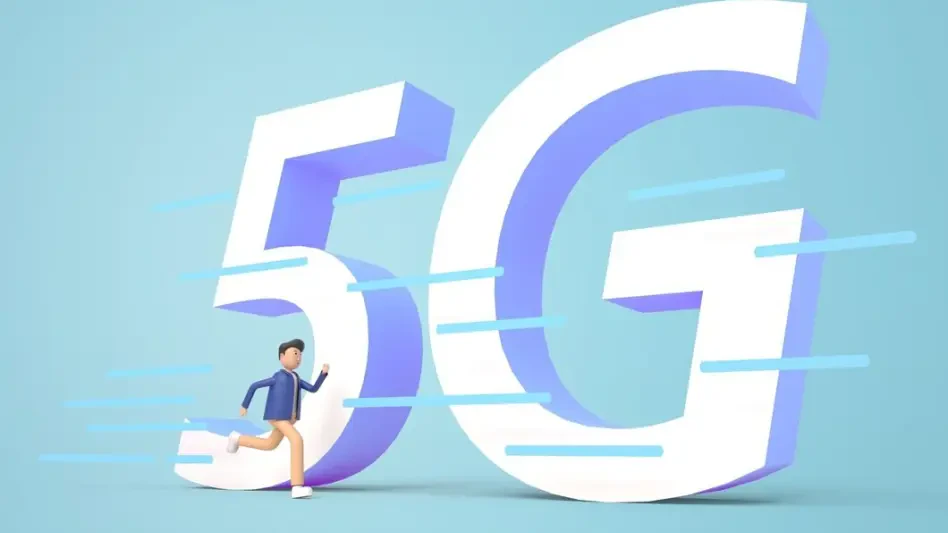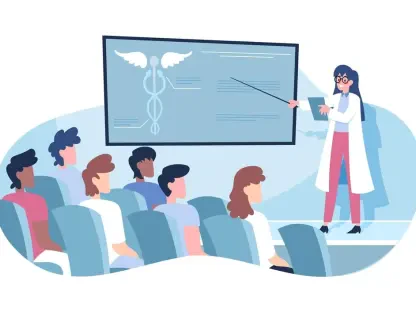In the sprawling landscape of US healthcare, where millions of patient interactions occur daily, the demand for seamless, secure, and high-speed connectivity has never been more critical. Imagine a bustling hospital campus where telehealth consultations, real-time medical imaging, and connected devices must operate without a glitch to save lives. This scenario underscores a pressing challenge: outdated network infrastructure struggling to keep pace with digital transformation. As healthcare facilities grapple with escalating data needs, a transformative solution emerges through strategic partnerships with telecommunications giants like Verizon, paving the way for 5G technology to revolutionize operations and patient care.
Overview of the US Healthcare Sector and Connectivity Needs
The US healthcare industry stands as a cornerstone of the economy, serving millions through an intricate network of hospitals, clinics, and specialized care centers. With annual spending in the trillions, this sector is undergoing a profound digital shift, integrating electronic health records, remote monitoring, and advanced diagnostic tools into daily operations. Major players such as AdventHealth, spanning multiple states, and Tampa General Hospital, a leading academic medical center in Florida, exemplify the scale and complexity of modern healthcare delivery, relying heavily on technology to manage vast patient data and ensure efficient service.
This digital evolution extends across key segments like telehealth, which has seen exponential growth, alongside connected medical devices that require constant, reliable data transmission. Hospitals are no longer just treatment centers but hubs of technological activity, where every second of downtime can impact critical care. The push toward real-time data access for clinicians and administrative staff highlights the urgent need for robust connectivity solutions that can handle high volumes of sensitive information without faltering.
Technology’s influence on healthcare operations is undeniable, shaping everything from patient scheduling to surgical precision through networked systems. As the industry embraces innovation, the demand for high-speed, secure networks becomes paramount to eliminate bottlenecks and enhance care delivery. This growing reliance on digital infrastructure sets the stage for advanced telecommunications to play a pivotal role in transforming how healthcare facilities function and serve their communities.
Verizon’s 5G Solutions in Healthcare: Trends and Impact
Emerging Trends in Healthcare Networking
A notable shift is occurring within healthcare as facilities move toward advanced telecommunications, particularly through the adoption of neutral host and private 5G networks. These technologies address the unique needs of sprawling medical campuses by providing tailored connectivity for diverse groups, including patients seeking public access and clinicians requiring secure, high-bandwidth channels for critical applications. Verizon Business has positioned itself as a leader in this space, offering customized solutions that bridge the gap between public accessibility and private security.
Several drivers fuel this trend, such as the increasing complexity of healthcare data, the rapid expansion of telehealth services, and the proliferation of connected medical equipment. Each of these elements demands faster, more reliable networks to prevent delays in care or data breaches that could compromise patient safety. The integration of 5G technology ensures that real-time communication and data transfer become seamless, even in high-traffic environments like emergency rooms or outpatient clinics.
Verizon’s approach to healthcare networking stands out by catering to varied user demands within a single facility. Neutral host networks allow patients and visitors to connect effortlessly, much like public Wi-Fi but with superior reliability, while private 5G networks safeguard sensitive operations for medical staff. This dual strategy not only enhances user experience but also fortifies the infrastructure against potential disruptions, setting a new standard for connectivity in medical settings.
Market Growth and Future Projections
The market for 5G in healthcare is experiencing significant growth, driven by widespread digital adoption and escalating connectivity needs across the sector. Industry data indicates a sharp rise in the deployment of networked medical devices and telehealth platforms, with projections suggesting that a majority of US healthcare facilities could integrate 5G solutions within the next few years, from 2025 to 2027. Partnerships with providers like Verizon are accelerating this trend, enabling hospitals to upgrade their systems at a rapid pace.
Looking ahead, the implementation of 5G is expected to scale dramatically, particularly as more institutions recognize the operational benefits of enhanced connectivity. Collaborations with technology leaders offer a blueprint for widespread adoption, ensuring that even smaller facilities can access cutting-edge networks through shared infrastructure models. This scalability promises to democratize advanced technology, bringing its advantages to diverse healthcare environments across the nation.
Performance improvements tied to 5G adoption are poised to transform both operational efficiency and patient care delivery. Faster data transmission can streamline administrative tasks, reduce wait times, and enable real-time monitoring of patient conditions, ultimately improving outcomes. As these networks become more pervasive, the potential for innovation in areas like remote surgery or personalized treatment plans grows, signaling a future where connectivity is synonymous with quality care.
Challenges in Implementing 5G Networks in Healthcare
Adopting 5G technology in healthcare is not without hurdles, as providers face significant barriers such as high infrastructure costs and complex integration processes. Upgrading existing systems to accommodate new networks often requires substantial investment, a challenge for facilities operating on tight budgets. Additionally, merging 5G with legacy technologies can create technical difficulties, slowing down deployment and straining resources.
Beyond financial and integration issues, ensuring seamless connectivity across diverse user groups presents a technological challenge. Large healthcare campuses must maintain network reliability for patients, staff, and specialized equipment simultaneously, a task complicated by varying security and bandwidth needs. Any lapse in service could disrupt critical operations, underscoring the importance of meticulous planning and robust system design in these environments.
To address these obstacles, collaborative partnerships with technology providers like Verizon and Ericsson offer a viable path forward. By leveraging expertise and shared resources, healthcare institutions can mitigate costs and technical complexities, ensuring smoother transitions to advanced networks. Such alliances also provide access to tailored solutions, helping facilities overcome unique challenges and build resilient connectivity frameworks for the long term.
Regulatory and Security Considerations for 5G in Healthcare
Navigating the regulatory landscape is a critical aspect of implementing 5G in healthcare, where compliance with frameworks like HIPAA and patient privacy laws remains non-negotiable. These regulations govern how data is managed and transmitted, placing strict requirements on network providers to safeguard sensitive information. Failure to adhere to these standards can result in severe penalties and loss of trust, making regulatory alignment a top priority for any connectivity initiative.
Security within private 5G networks is equally paramount, as these systems must protect medical data from breaches while ensuring uninterrupted clinical operations. The high stakes of healthcare environments demand encryption and access controls that prevent unauthorized access to patient records or connected devices. Robust security measures are essential to maintain confidence among stakeholders and support the continuous delivery of care.
Verizon’s solutions are designed with these considerations in mind, aligning with regulatory standards through customized network architectures that prioritize data protection. By integrating advanced security protocols into private 5G setups, the company addresses the sector’s stringent needs, offering healthcare providers peace of mind. This commitment to compliance and safety enhances the appeal of 5G adoption, ensuring that innovation does not come at the expense of privacy or reliability.
Future Outlook for 5G in US Healthcare
The trajectory of 5G adoption in healthcare points to a future rich with potential, particularly as emerging technologies like artificial intelligence and the Internet of Things become integral to medical settings. These advancements rely on high-speed, low-latency networks to function effectively, from AI-driven diagnostics to IoT-enabled patient monitoring systems. As 5G infrastructure expands, it will serve as the backbone for such innovations, driving efficiency and precision in care delivery.
Verizon’s dual-network model, combining neutral host and private 5G capabilities, positions healthcare facilities for scalability and forward-thinking innovation. This approach allows institutions to adapt to growing device density and evolving security needs while piloting new applications without disrupting existing services. The flexibility of this framework ensures that hospitals remain agile in a landscape defined by rapid technological change.
External factors, including economic conditions, regulatory shifts, and rising consumer expectations, will continue to shape the future of connectivity in healthcare. Economic pressures may influence investment in infrastructure, while evolving policies could introduce new compliance challenges. Meanwhile, patients increasingly demand seamless digital experiences, pushing providers to prioritize network performance as a competitive edge in delivering exceptional care.
Conclusion and Strategic Implications
Reflecting on the journey of 5G integration in US healthcare, partnerships with Verizon Business, as seen with AdventHealth and Tampa General Hospital, marked a turning point in addressing connectivity challenges. These collaborations demonstrated how tailored network solutions could enhance operational efficiency and elevate patient care standards. The transformative impact of advanced networking became evident as facilities overcame data bottlenecks and embraced digital tools with newfound reliability.
Moving forward, healthcare providers should prioritize investments in scalable, secure connectivity solutions to maintain a competitive edge in an ever-evolving digital landscape. Exploring strategic alliances with technology leaders can ease the transition to 5G, offering access to expertise and resources that mitigate implementation risks. By focusing on adaptable infrastructure, institutions can prepare for emerging innovations, ensuring they remain at the forefront of care delivery.
Additionally, a proactive approach to regulatory compliance and cybersecurity must guide future efforts, safeguarding patient trust while harnessing the full potential of 5G. Stakeholders should advocate for policies that support infrastructure funding and innovation, creating an environment where technology and healthcare converge seamlessly. These steps will solidify the foundation for a connected, efficient, and patient-centric future in the sector.









